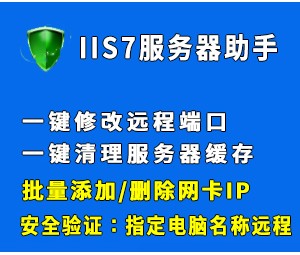1、Dictionary语法
- Dictionary由key/value对(称为项目)组成,key和value之间用“:”分割,项目用“,”分割,所有项目用“{}”包括起来
- Dictionary的key值必须唯一,否则后者会覆盖前者:
- 使用dict()函数可以从Mapping(如其它的Dictionary)或key/value形式的Sequence创建Dictionary:
- 也可以用keyWord参数来创建Dictionary:
2、基本Dictionary操作
- Dictionary支持Sequence的基本操作,但要注意下面几点:
- key值可以是任何类型,但必须是不可变类型,如整数、浮点数、String、Tuple
- 对项目赋值时,如果key值不存在,会新建项目:
- 使用in操作符时,是查找key值,而不是value值
3、使用Dictionary格式化String
- 转换形式:%(key)type(type是转换类型)
4、Dictionary方法
(1) clear:移去Dictionary中所有的元素
>>> d = {'age': 42, 'name': 'Gumby'}>>> d{'age': 42, 'name': 'Gumby'}>>> d.clear()>>> d{}- 注意,d.clear()和d = {}结果相同,但含义不同:后者是指向了一个新的空Dictionary
(2) copy:返回具有相同key/value对的新Dictionary(注意value值是共用的)
>>> x = {'username': 'admin', 'Machines': ['foo', 'bar', 'baz']}>>> y = x.copy()>>> y['username'] = 'mlh'>>> y['machines'].remove('bar')>>> y{'username': 'mlh', 'machines': ['foo', 'baz']}>>> x{'username': 'admin', 'machines': ['foo', 'baz']}- 避免上面问题的方法是对value值也进行拷贝,可以使用copy模块中的deepcopy()函数:
(3) fromkeys:根据给定的key值创建新的Dictionary,缺省value值为None
- 可以使用Dictionary的Type(后面讲述):dict
- 可以指定value的缺省值:
(4) get:获取项目的value值(不常用)
- 注意下面的区别:
- 可以指定缺省值(缺省是None):
(5) has_key:检查Dictionary中是否有指定key
>>> d = {}>>> d.has_key('name')0>>> d['name'] = 'Eric'>>> d.has_key('name')1(6) items和iteritems
- items()以List返回Dictionary中所有项目,每个项目的形式是(key, value):
- iteritems()返回Iterator对象:
(7) keys和iterkeys
>>> d.keys()['url', 'spam', 'title']>>> d.iterkeys()<dictionary-keyiterator object at 0x01073720>>>> list(d.iterkeys())['url', 'spam', 'title'](8) pop:根据指定key返回value,并从Dictionary中移去该项目:
>>> d = {'x': 1, 'y': 2}>>> d.pop('x')1>>> d{'y': 2}(9) popitem:从Dictionary中随机弹出一个项目返回(Dictionary中的项目是无序的)
>>> d = {'title': 'Python Web Site', 'url': 'http://www.python.org', 'spam': 0}>>> d.popitem()('url', 'http://www.python.org')>>> d{'spam': 0, 'title': 'Python Web Site'}(10) setdefault:根据指定的key值,对不在Dictionary的项目设置value值
>>> d = {}>>> d.setdefault('name', 'N/A')'N/A'>>> d{'name': 'N/A'}>>> d['name'] = 'Gumby'>>> d.setdefault('name', 'N/A')'Gumby'>>> d{'name': 'Gumby'}- 如果不指定缺省值,则使用None
(11) update:使用另一个Dictionary的项目来更新指定Dictionary
>>> d = {'title': 'Python Web Site', 'url': 'http://www.python.org', 'changed': 'Mar 14 22:09:15 MET 2005'}>>> x = {'title': 'Python Language Website'}>>> d.update(x)>>> d{'url': 'http://www.python.org', 'changed': 'Mar 14 22:09:15 MET 2005', 'title': 'Python Language Website'}(12) values和itervalues>>> d.values()['http://www.python.org', 'Mar 14 22:09:15 MET 2005', 'Python Language Website']>>> d.itervalues()<dictionary-valueiterator object at 0x01073900>>>> list(d.itervalues())







0